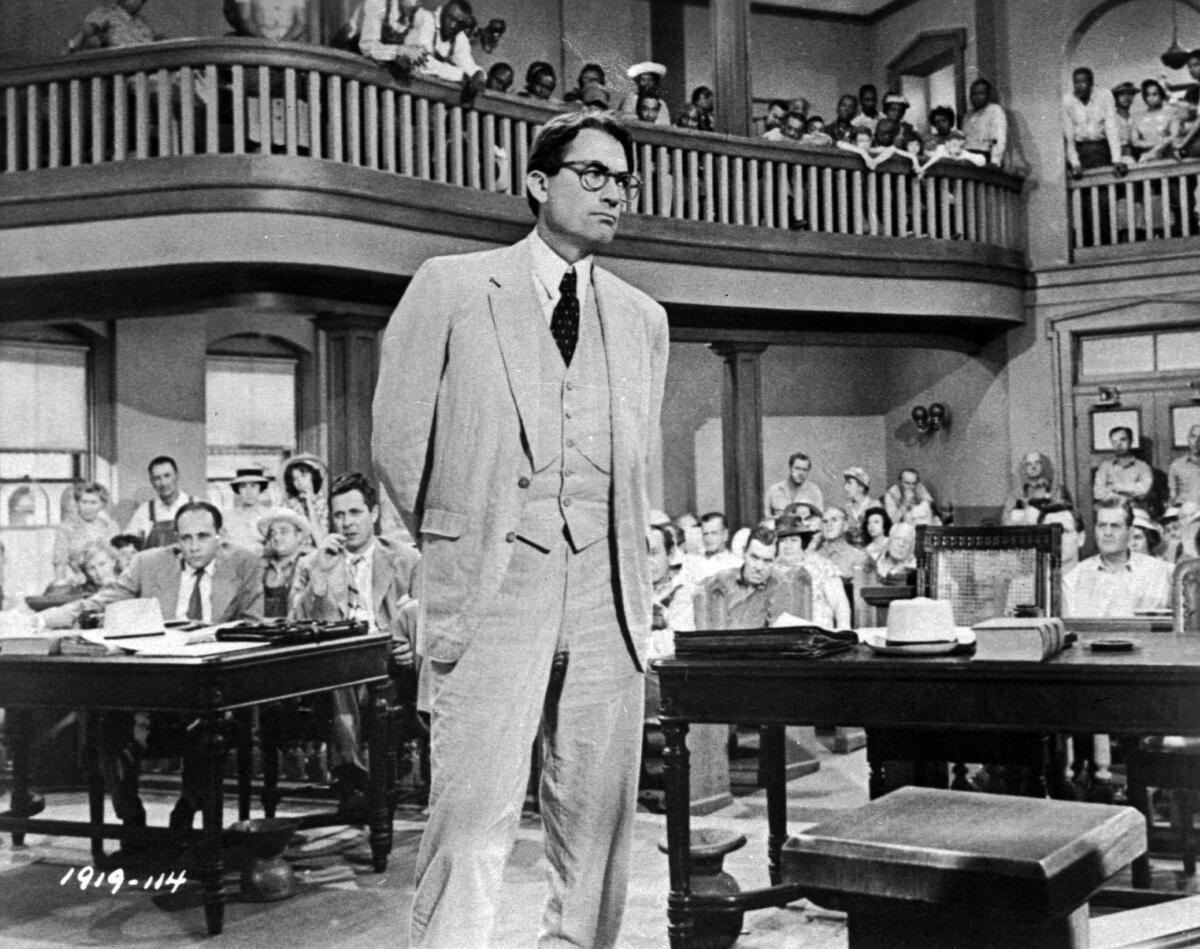From the Archives: How the academy addressed its membership issues in 1970

In this 1962 file photo, actor Gregory Peck is shown as attorney Atticus Finch in a scene from “To Kill a Mockingbird.” Peck also was president of the Academy of Motion Picture Arts and Sciences.
- Share via
In 1970, the Academy of Motion Picture Arts and Sciences faced a dilemma similar to what it does today — a membership that may not be best reflective of modern-day Hollywood. Here is how it dealt with the issue then.
The membership rolls of the Academy of Motion Picture Arts and Sciences, a subject of frequent controversy each time the Oscars come around, have been revised and democratized as the result of a two-year study. Also being revised and democratized are procedures for electing the academy’s board of governors.
In a letter sent to all members, academy president Gregory Peck announced that 335 members have been redesignated “associates,” and have thus lost the right to vote in the Academy Award balloting.
Letter From Peck
These transfers presumably derive from what Peck’s letter called “a just determination concerning the voting privileges of members who have been professionally inactive in motion pictures for a number of years.”
In addition, 109 members are being transferred from craft branches of the academy to members-at-large. Members-at-large vote in nominations for best picture only, although they vote in all categories on the final ballot.
Transfers in effect
The intent here seems clearly to “purify” the voting for semifinal and final nominations in the craft specialties particularly.
Some 49 members are being transferred from one branch of profession to another, reflecting changes in their working lives.
The transfers take effect at once, but Peck has appointed a review committee to hear grievances from members who wish to challenge the transfers.
The re-evaluations were done by the various branches. Many, Peck says, used a seven-year yardstick: those who had not worked actively in film-making for seven years were transferred to associate memberships. Of the 784 voting members of the acting branch, for example, 30 who hadn’t worked in seven years became associates. Another shifted to member-at-large.
Of 142 in the cinematographers branch, 24 were decided to be in fact special effects or related specialties and were shifted to members-at-large.
17 directors
Of the directors, 17 became associates, one was reclassified in the writers branch and one — “for reasons best known to himself,” Peck says in some amusement — became an actor.
“We are making the academy more truly what it has always been or meant to be,” Peck says, “a society of working professionals actively involved in the making of films.”
The academy is also announcing a new system for electing its board of governors. “We’re giving the membership a larger voice in the selection of their leaders,” Peck says, “so that if the charges of closed shop were ever true, they will certainly not be true now.”
ALSO
A look at Asian, Latino and indigenous nominees and winners
Should host Chris Rock step aside in protest over #OscarsSoWhite?
Yes, Stacey Dash, white people do get NAACP Image and BET awards
More to Read
Only good movies
Get the Indie Focus newsletter, Mark Olsen's weekly guide to the world of cinema.
You may occasionally receive promotional content from the Los Angeles Times.










